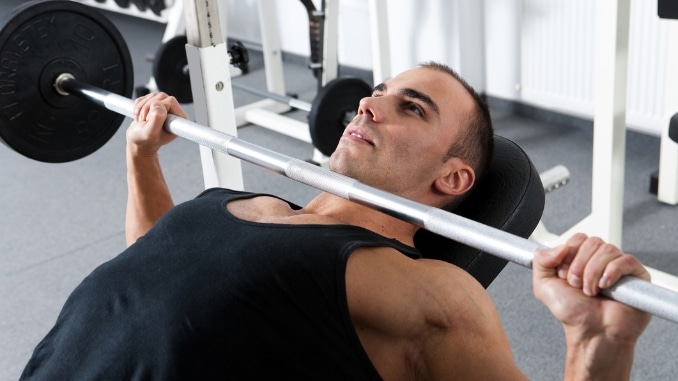
Medical Disclaimer: The information in this blog is for enlightening and educational purposes only and is not intended as medical advice. This content does not replace professional medical advice or treatment. Always ask advice from your physician or other qualified health providers with any questions you may have regarding a medical condition.
Want boulder shoulders and a powerful upper body that turns heads? The power shoulder press isn’t just another gym exercise — it’s a highly effective strength-building move you may not be doing yet. This compound lift targets your deltoids, engages your triceps, and challenges core stability, giving you results that isolation exercises just can’t deliver.
So why is it a go-to for elite athletes, bodybuilders, and serious lifters around the globe? Simple: it works. Whether you’re chasing PRs, sculpted arms, or all-around power, the power shoulder press builds real-world strength fast.
Warm-up: Shoulder and Upper Back Stretch
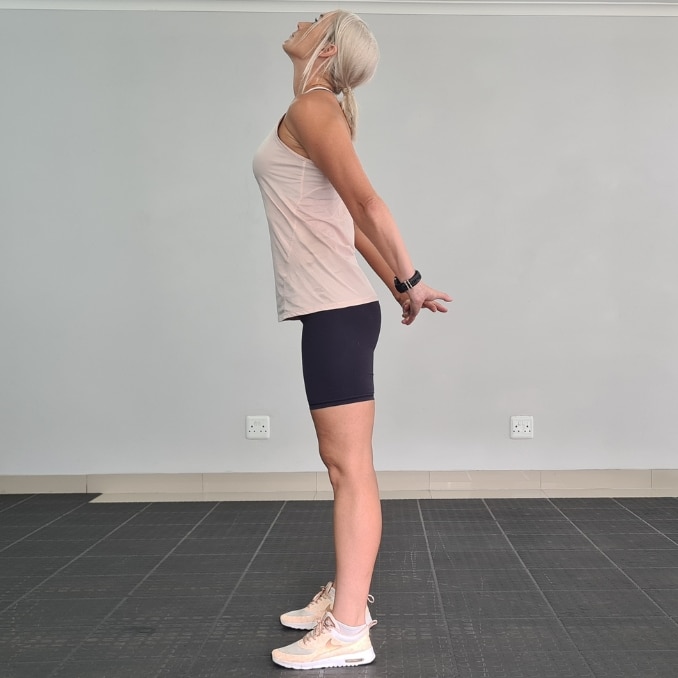
- Begin in an upright standing position with your feet hip-width apart, while maintaining good alignment with your head, shoulders, hips, and legs.
- Interlace your fingers behind your back.
- Engage your core, straighten your arms, and then gently lift your chest toward the ceiling while pulling your hands downward and slightly away from your back.
- Tilt your head back slightly to deepen the chest and shoulder stretch.
- Hold this position for several deep belly breaths, in through your nose and then out through your mouth.
- Relax and return to the starting position.
Power Shoulder Press – Proper Execution
- Begin in a seated position on a sturdy bench with back support for stability.
- Keep your feet flat on the floor, while maintaining good alignment with your head, shoulders, and hips.
- Use a barbell loaded with a challenging weight.
- This protocol uses cluster training — 6 total reps, with a 20-second rest and reset between each.
Set 1: Initial Activation
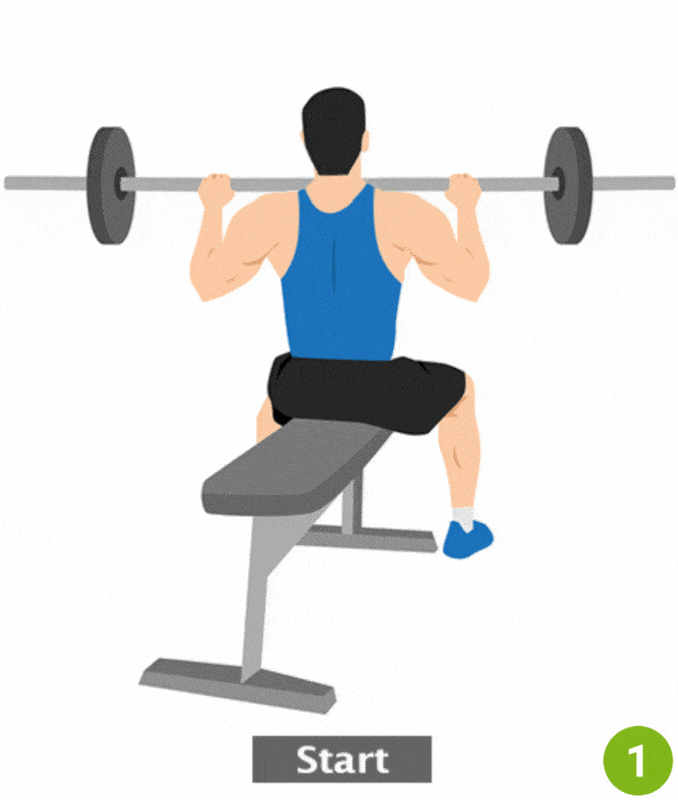
- Sit upright on the bench with the barbell racked at shoulder height.
- Grip the bar just outside shoulder-width for optimal mechanics, with your palms facing forward.
- Engage your core and then gently pull yourself upward to activate your lats.
- Press the bar straight up overhead with control, then lower it back to shoulder level.
- Rest and reset for 20 seconds before continuing.
Set 2: Controlled Motions
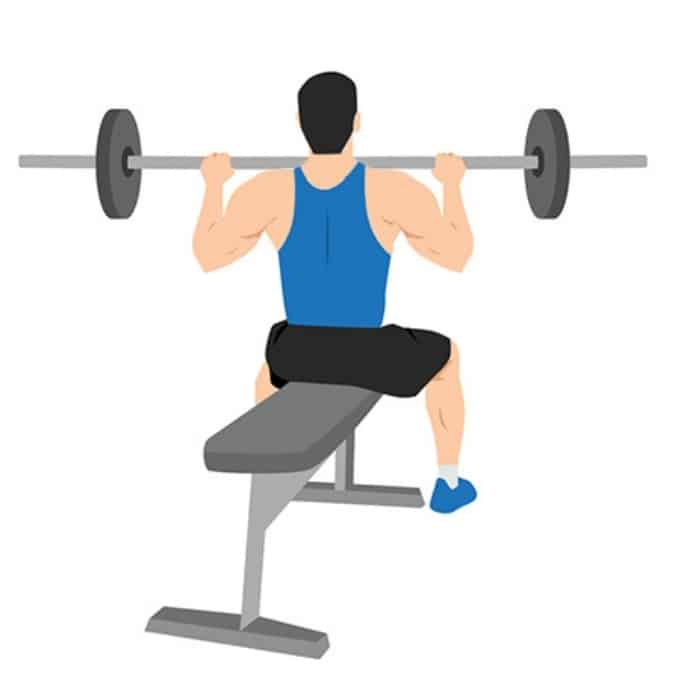
- Repeat your setup, focusing again on lat activation.
- Engage your core, press the bar overhead with smooth control, and then return it to the starting position.
- Keep your posture strong and tight throughout the motion.
- Rest and reset for 20 seconds.
Set 3: Shoulder Stretch and Pause
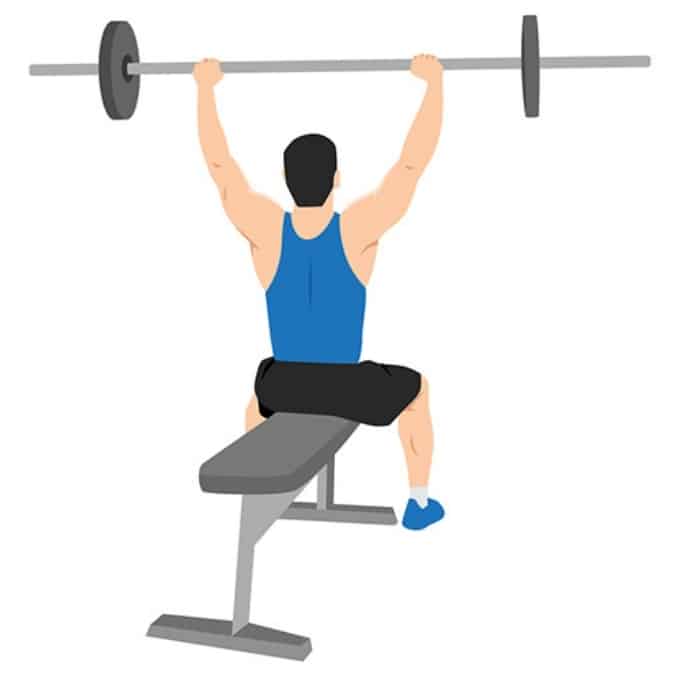
- Begin with the same setup and press the bar until your arms are fully extended overhead.
- At the top, fully extend your arms without locking your elbows to maintain tension.
- Hold for 1 second, then lower the bar with control to the starting position.
- Rest and reset for 20 seconds.
Set 4: Fatigue Management
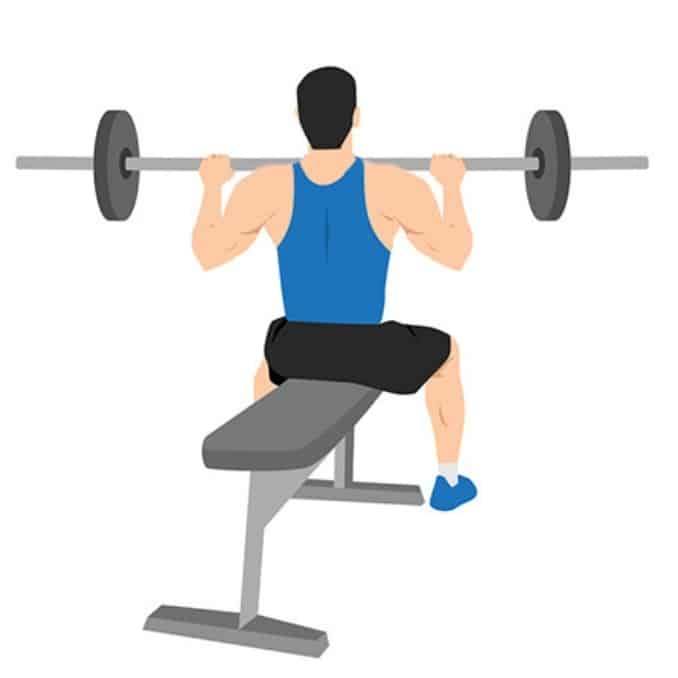
- As fatigue builds, brace your core and push your feet into the floor.
- Inhale deeply to stabilize your trunk, then press the bar overhead using controlled strength.
- Lower slowly.
- Use the full 20 seconds to recover — you may walk or perform gentle arm swings to keep circulation flowing.
Set 5: Elastic Tension Drill

- Start at the top of the press and then slowly lower the bar to the bottom of the movement.
- At the bottom, allow a slight rebound to create elastic tension, then drive the bar back up.
- This enhances power at the bottom range of motion.
- Reset for 20 seconds.
Set 6: Head Shift for Alignment

- Begin as before, pressing the bar overhead.
- As the bar clears your head, slightly shift your head forward so the bar finishes in line with your ears.
- This recruits more deltoid engagement and adds stability at the top.
- Lower with control and then complete your final rep.
What is the Power Shoulder Press?
The power shoulder press is an explosive upgrade of the classic shoulder press, blending strength, speed, and balance into one powerful overhead movement. With the barbell racked at your shoulders, you drive it overhead using both muscle and momentum, demanding full-body control.
How it compares:
- Strict Press – All muscle, no momentum
- Push Press – Adds leg drive for more weight
- Military Press – Stricter stance, less stability
The power shoulder press combines strength, coordination, and functional application.
Muscles worked:

- Deltoids
- Triceps
- Upper chest
- Core & glutes
Benefits of the Power Shoulder Press
Why choose the power shoulder press? It delivers maximum results [1] in minimal time:
- Builds serious upper-body strength
- Engages your core for full-body stability
- Improves real-world, functional movement
- Efficiently trains multiple muscles at once
Safety Considerations
Shoulder injuries are common [2] in both beginners and experienced lifters.
Don’t get reckless — train smart:
- Warm up your shoulders and upper back
- Work on mobility (especially thoracic spine & rotator cuff)
- Use a spotter or lifting belt if going heavy
- If it hurts, adjust — not all variations fit every body
Technique Matters
- Grip width, barbell path, and back arching significantly impact shoulder strain and lift effectiveness.
- A wider grip reduces bar travel but may increase stress on the shoulder joints, depending on individual mobility.
- Using a safer grip (not wider than 1.5 times shoulder width) is better for shoulder health. [3]
Conclusion
The power shoulder press isn’t just another lift — it’s your shortcut to serious upper-body power. It strengthens key muscles, with a primary focus on the anterior deltoids. The movement also strengthens the shoulder joint, helping improve posture and shape.
Start light, maintain a controlled motion, and then fully return to the starting position after each rep. Over time, you’ll notice increased strength in your shoulders and a more defined waist and neckline.
Ready to press up? Add it to your next workout and feel the difference.
Thankfully, there is good news for anyone struggling with tight and sore shoulder muscles. Introducing Unlock Your Tight Shoulders, the perfect solution for relieving shoulder muscle pain and stiffness, safely and naturally. Check out now!
Frequently Asked Questions
What is a strong shoulder press?
A strong shoulder press means lifting a good amount of weight over your head using your shoulders and arms. What’s considered “strong” depends on your size, training experience, and gender. If you can press your own bodyweight, that’s very strong. Even lifting half your bodyweight is still a great sign of strength.
Can I wear shoulder pads while doing the shoulder press?
Yes, you can wear shoulder pads if that’s part of your gear or outfit. Just make sure they don’t restrict your shoulder movement or posture while lifting. Comfort and proper form should always come first.
How do I prevent pain in my wrists when doing push-ups or using dumbbells?
To avoid wrist pain, try adjusting your hand position during push-ups or shoulder presses. Keep your wrists neutral and avoid bending them too much. Using dumbbells with a proper grip and, if necessary, wrist supports can help reduce strain, particularly when lifting heavy.

